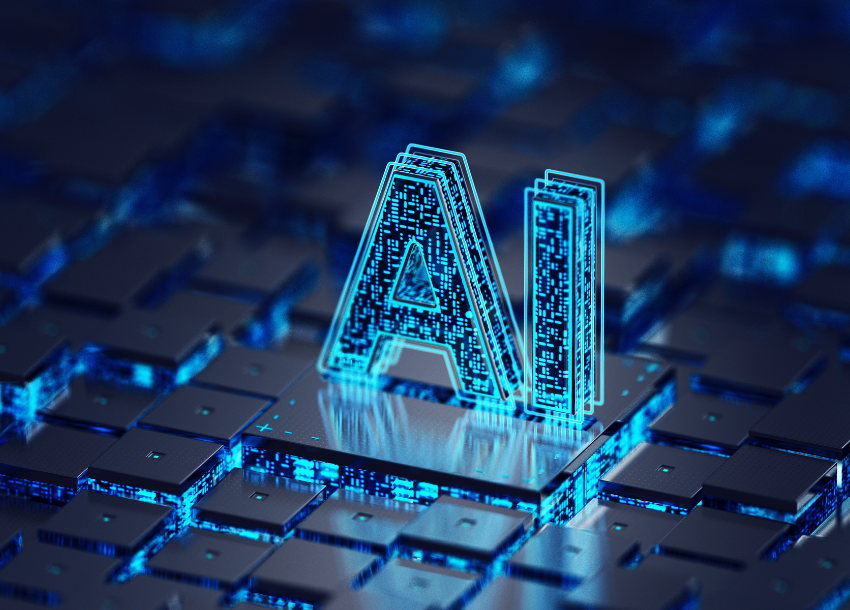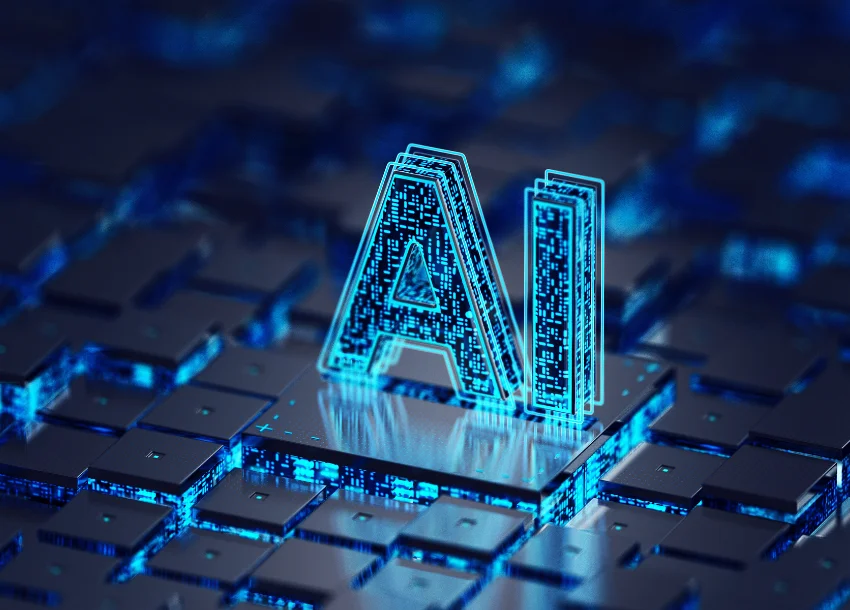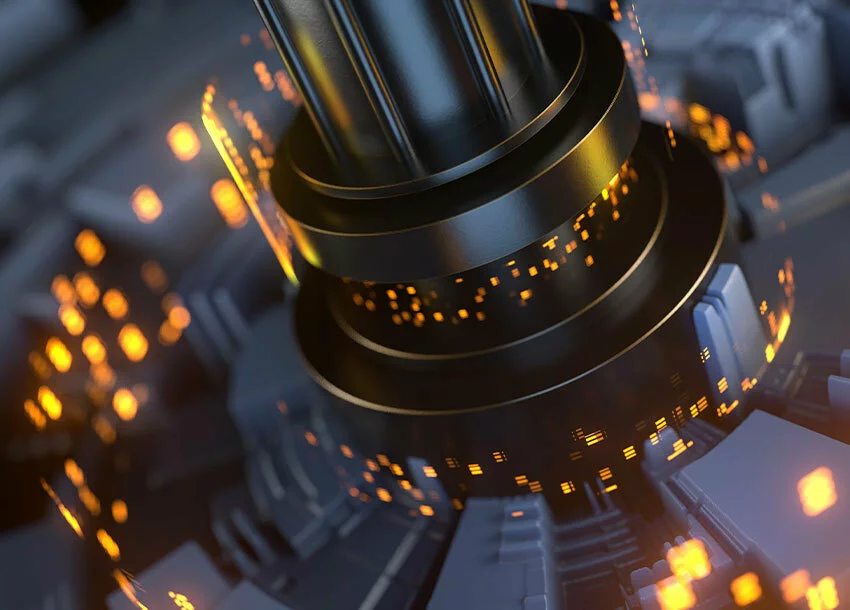Protecting Generative AI-Derived Inventions in the Pharmaceutical and Life Science Industry
As Pharmaceutical and Life Science companies (“PLSCs”) increasingly incorporate artificial intelligence tools into their businesses, they must consider how adopting these tools affects the protection and ownership of intellectual property. Generative AI, which (“GEN AI”) refers to AI that creates new digital content based on existing content, may help PLSCs foster industry success by improving health outcomes and quality of life through accelerated drug discovery and clinical trials, autonomous manufacturing, clearer machine to human interaction, and improved marketing strategies.
In fact, many PLSCs are already developing and implementing GEN AI tools within their businesses. However, since AI models are trained on large amounts of data obtained from various sources, numerous IP concerns have arisen, which presents a particular issue for PLSCs given the strict regulatory environment the industry operates within. While the issues discussed herein are often directed to PLSCs, the same issues also apply to other players in the Pharmaceutical and Life Science industry, such as universities.
GEN AI Use Cases by PLSCs
The cost of bringing a new drug or therapy to market is continually increasing, but GEN AI could potentially reduce PLCSs’ costs through identifying viable molecular targets, developing tests to validate a potential treatment's effectiveness, singling out promising leads, and assisting researchers in preclinical testing. Use cases include:
In Silico Compound Screening for Small and Large Chemical Compounds.
Clinicians are developing GEN AI models that predict antibody-antigen interactions based on the sequenced structure of antibodies and antigens. If development is successful, these models will predict antibody-based drugs with specific functional features.
Optimized Trials and Portfolios.
In precision oncology, clinicians use biomarkers to group cancer patients based on the likelihood that a specific patient will respond to treatment. GEN AI will enable companies to compile thorough and representative clinical-trial populations. Utilizing these models to compare genetic/phenotypic data with “real world” data (e.g., drawn from patients’ medical records) will increase clinicians’ understanding of how and why patients respond differently to the same treatments.
PLSCs are burdened by clinical timelines and regulatory requirements. GEN AI may also help PLSCs by making the process of bringing therapies out of the laboratory to market more efficient.
Use cases include:
- Health Authority Queries (“HAQs”). During the clinical development process, regulatory agencies require PLSCs to answer questions and requests about the treatments they are developing, known as HAQs. HAQs often delay approval of new treatments. GEN AI can limit unexpected delays by helping clinicians anticipate HAQs before submitting treatments for review by providing insights on regulatory strategies and risk management concerns.
- Accelerated Drafting of Reports. Clinicians are using GEN AI tools to generate a first draft for clinical study reports, which must be submitted during the final stage of review. Traditionally, clinical-study reports take upwards of eight weeks to be completed. GEN AI can cut this timeline in half by reviewing the treatment's underlying protocol, statistical analysis, tables, listings, and figures to generate a nearly complete first draft. Automated reports provide medical writers with more time to focus on the sections of the report requiring a complex clinical analysis.
Some of the GEN AI usage does not affect patent rights. For example, merely using GEN AI to produce reports or other administrative actions does not affect patent rights. However, the amount of usage and the type of usage of GEN AI may affect the ability to obtain patent protection. As patents are an important instrument in the Pharmaceutical and Life Science industry, ensuring the preservation of patent protection is important.
When GEN AI Aided Inventions are Patentable?
For PLSCs to make the most out of GEN AI, the PLSCs must understand the landscape surrounding the patentability of inventions that are conceived partially or completely using AI (together “AI products”). Users of GEN AI can understand the inputs and outputs produced by the technology, but the internal processes driving decisions made by GEN AI are not easily explained. As GEN AI has developed, legal questions have arisen concerning whether inventions developed using AI can be protected by patents or other IP protections. The overview herein provides the current state of GEN AI, but the underlying state is constantly changing.
Under current law, GEN AI products developed by PLSCs may be patentable. In the Pharmaceutical and Life Science industry, there are two considerations relating to GEN AI and patents. First, can the AI models used within the industry be protected, and second, whether the products (i.e., medical devices, medicines, therapies, etc.) created using AI be protected.
Can AI Models Used by PLSCs be Protected via Patents?
A major hurdle in patenting an AI invention is determining whether the invention is subject matter eligible under 35 U.S.C. § 101 of the Patent Act. Section 101 does not extend protection to claims merely labeled as abstract ideas, laws of nature, or natural phenomenon (i.e., judicial exceptions).
Based on current case law, the U.S. Patent and Trademark Office (“USPTO”) has outlined a multipart test to determine whether an invention is patentable under 35 U.S.C. § 101. Computer models, and by extension AI models, are a contested subject in terms of containing patentable subject matter. The ability to patent GEN AI models in the Pharmaceutical and Life Science industry is similar to other industries. Finding an IP practitioner that specializes in software patents and specifically AI patents can be helpful for determining IP strategy.
As PLSCs incorporate more GEN AI modeling and usage into the development process, it may be worthwhile to consider protecting underlying GEN AI modeling. However, the underlying GEN AI models may also be protected using other IP protections, such as keeping the GEN AI model as a trade secret. An experienced IP attorney can help to determine the proper IP tool for protection. For example, an AI model that is used primarily in background operations (e.g., as a tool for researchers) may be better protected as a trade secret, while an AI model that is used in a more public use case may be difficult to protect as a trade secret, at which point obtaining patent protection may be preferrable.
Patentability of AI-assisted Inventions: At What Point is AI no Longer a Tool but the Inventor?
One of the largest concerns for AI-assisted invention relates to inventorship. GEN AI's ability to create novel processes and discover potential therapies has presented legal issues, primarily whether the technology can be an inventor. As detailed herein, U.S. courts have thus far ruled an invention must have a human inventor in order to be eligible for a patent. Other countries are also contemplating the ability for a non-human to be a sole inventor.
The Federal Circuit, in Thaler v. Vidal held that “inventors must be natural persons; that is human beings.” Under Thaler, any invention made by AI alone is ineligible for patent protection. This leads to another question: how much AI can be used before it's considered an inventor?
To clarify this issue, the USPTO has issued guidance on the inventorship of AI-assisted inventions, providing practical steps PLSCs can take to ensure humans are creating their inventions, not AI. The USPTO guidelines incorporate the law governing joint inventorship and adopts the Pannu factors to determine the conditions qualifying a human as an inventor of an AI-assisted invention.
As a threshold matter, usage of an AI system by a human does not preclude inventorship status if that person significantly contributed to the claimed invention. To determine whether a human significantly contributed to the claimed invention, courts weigh the following Pannu factors: (1) conception, (2) quality of contribution, and (3) full explanation of the state of the art.
- The first factor requires that a human conceive the invention. Each named inventor must make significant contributions to the completed invention as it will be applied in practice. Consequently, GEN AI models should be limited to specifically following instructions provided by the user, instead of creating the underlying concept or process. To ensure protection, the human inventor should conceive of the invention before using GEN AI, and if these tools are used, such use should only supplement the inventive process. Where inventorship may be an issue, especially when an invention was conceived by a human inventor and later refined through GEN AI use, PLSCs should maintain a record of the prompts supplied to the GEN AI model.
- The second factor requires a subjective determination of whether the human inventor made contributions to the invention that are significant in quality, compared to the entire invention. This factor requires that the human inventor made a meaningful impact on the development of the invention (i.e., something more than mere experimentation).
- The third factor asks whether the human inventor did more “than merely explain to the real inventors well-known concepts and/or the current state of the art.” The critical inquiry is whether the human inventor conceived the initial idea that became the invention. Inventorship status will not lay where a human inventor develops an invention after GEN AI first conceives it.
While this guidance recognizes that an AI system may not be named as an inventor or joint inventor, it also shows the Patent Act does not entirely preclude patentability of inventions created by persons using specific tools, including AI models. In sum, for AI assisted inventions to be patentable, a human must contribute to the conception in a significant way, rather than merely providing well-known concepts or the current state of the art.
Drafting Considerations
Based on the framework described above, when PLSCs want to patent an AI product, they should consider drafting claims to:
- Characterize inventions such that they fall outside the group of subject matter considered as abstract ideas, including purely mathematical computations and mental processes.
- Integrate anything that could potentially be construed as an abstract idea into a practical application, such as by improving a computer's function or implementing the idea in conjunction with a machine.
- Recite claims in ways that cannot be performed by the human mind. For example, describe the AI invention in terms of its structure rather than its functionality.
- Focus on how the AI model processes the data. For example, recite how the model manipulates the inputted data.
Finally, it should be stated that USPTO guidance does not have the force of law, and can be overruled by the President, Congress, and the Judiciary.
Recommendations for Protecting IP including AI inventions
In order to protect potential products created using GEN AI, PLSCs must understand how GEN AI is being used within the development process. Namely, PLSCs need to understand how GEN AI is used throughout development in order to determine whether any potential inventions were made by a human inventor. PLSCs also need to have outlined guidelines for using GEN AI and recording how the GEN AI is being used. As GEN AI capabilities grow and usage by individuals increases, guidelines for usage are necessary to avoid any issues discussed herein. Example guidelines may include documenting any GEN AI usage in invention disclosures, restricting GEN AI usage for certain activities, monitoring GEN AI usage by team members, and/or other stated guidelines. The usage of GEN AI should be incorporated into the entire IP protection tool kit for PLSCs.
Some GEN AI products may be protected using trade secret protection. To ensure trade secret protection, PLSCs must keep the underlying algorithm secret, which will be more or less viable depending on how the business intends to use the component. For example, companies seeking approval for a new medical device or diagnostic system may be required by the FDA to disclose how the invention operates. An additional challenge associated with trade secrets related to drug discovery and development are the data protection risks associated with training an AI model with trade secrets, providing trade secrets to an AI model, and maintaining AI outputs as trade secrets. For example, training AI models on trade secrets could unintentionally reveal the sensitive information used by these models.
Conclusion
As the legal environment and business conditions continually change, pharmaceutical and life sciences companies must be laser-focused on plans to patent and monetize AI innovations. Current case law and USPTO guidance make clear that AI products can be patented, depending on how the invention was developed and how it is used in practice.
About Maynard Nexsen
Maynard Nexsen is a full-service law firm of 600+ attorneys in 31 locations from coast to coast across the United States. Maynard Nexsen formed in 2023 when two successful, client-centered firms combined to form a powerful national team. Maynard Nexsen’s list of clients spans a wide range of industry sectors and includes both public and private companies.










